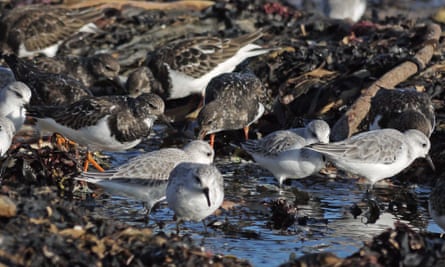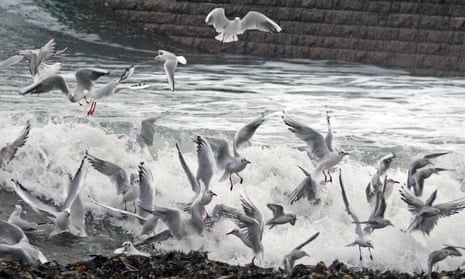Storms had torn wracks and kelps from the seabed and driven them against Roker pier, forcing the heap higher up the beach with each successive tide. This afternoon it was seething with seabirds.
There were sanderlings, conspicuous in their pale grey and white plumage, and turnstones, whose feathers so closely matched the hues of the brown fronds that they would have been all but invisible if they had not been constantly on the move. Close by, on the seaward side, raucous black-headed and herring gulls gathered, riding the waves.

Out at sea the gentle swell sent waves rolling along the length of the pier wall, each growing higher as the water became shallower on its journey to the shore. Most arrived with barely enough force to disturb the edge of the heap. But occasionally one, much larger than the rest with a tumultuous white crest, would threaten to engulf both seaweeds and seabirds. With barely a second to spare the foragers rose in a wild cacophony.
White water hissed and bubbled, then gurgled and rattled as it subsided, dragging stones and kelp down the beach in its undertow.
The gulls hung in the air above the chaos, then settled around the pile of seaweed as the wave subsided. The waders dispersed briefly as separate flocks, turnstones landing on the pier, sanderlings on the beach, but returned almost instantly the wave retreated, sweeping in low over the water on stiff, fast-beating wings, to settle again on their feeding ground.
I watched the cycle several times: small waves that posed no threat, then a large breaker whose force the birds exploited, hastening to pick off small morsels – worms and arthropods – that had been dislodged before they could wriggle back into tangled seaweed. This was not chaotic. There was underlying rhythm and order.
The gulls worked the edges of the heap, catching prey flushed into pools filled by the backwash. Turnstones and sanderlings shared the top, flipping weed aside and probing to find food disturbed by the breakers.
This spectacle was an exhilarating choreography of waves and wings, with a musical score of gull cries and piping, contact, calls of waders.
Follow Country diary on Twitter: @gdncountrydiary

Comments (…)
Sign in or create your Guardian account to join the discussion